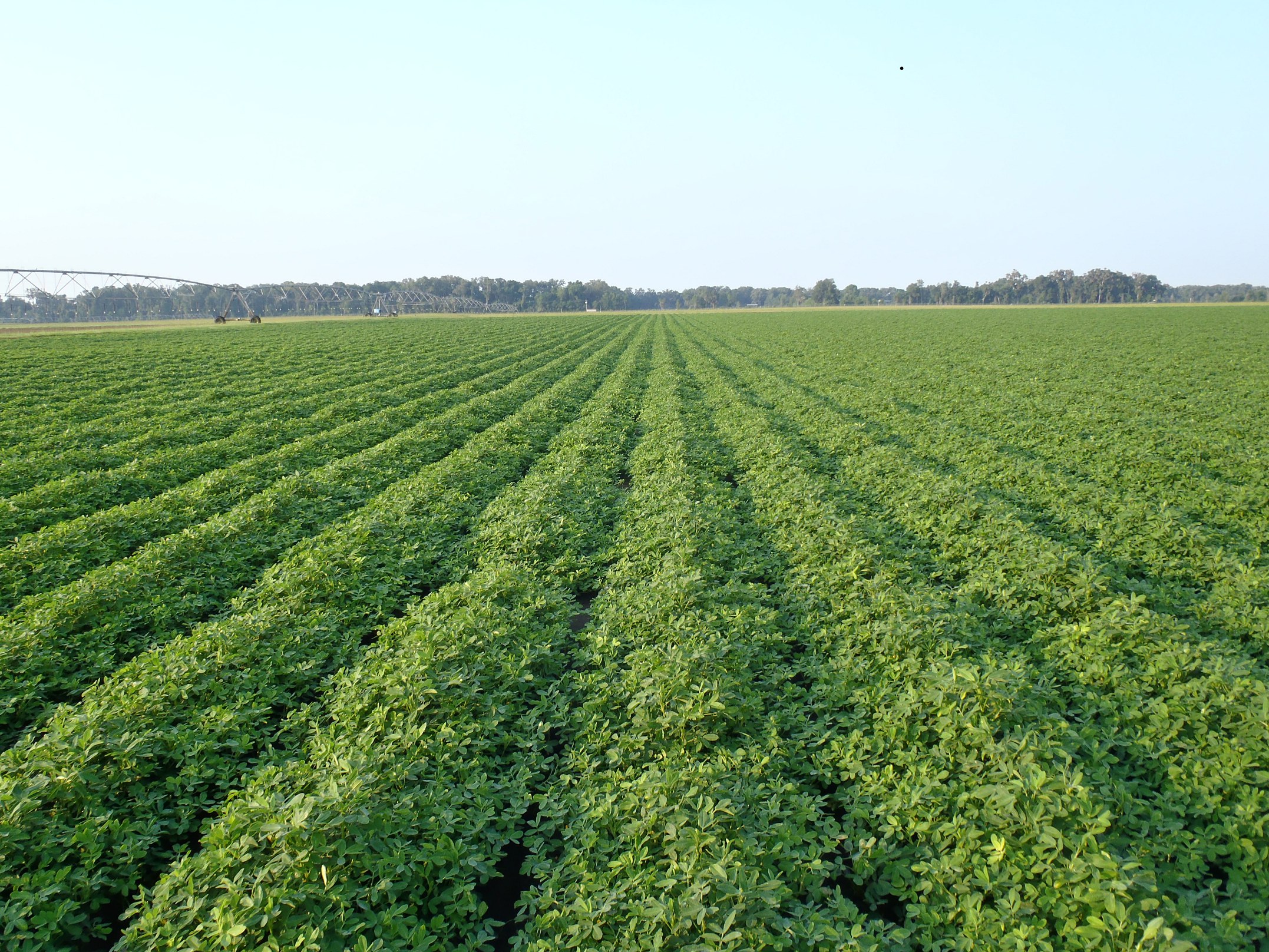Peanut maturity is a key factor that determines yield and grade of peanuts. Since peanuts are an indeterminate crop, they set their fruit over a long period of time as opposed to all at once. The variability of pod maturity can sometimes make it difficult to decide when to dig or harvest the crop.
The two main factors that determine how fast peanuts will mature is temperature and rainfall. Researchers from the Universities of Florida and Georgia as well as the National Peanut Lab have called the combination of these factors “Adjusted Growing Degree Days” (AGDD’s).
An AGDD is simply the average air temperature plus the total rainfall on a given day. The addition of AGDD’s over a growing season helps determine the maturity of a peanut crop because it takes into account the temperatures and rainfall over the season. Research shows that peanuts are mature at around 2500 AGDD’s.
Early in the season, peanuts accumulate AGDD’s slowly, because the air temperatures tend to be relatively cool. In July and August, air temperatures increase and AGDD’s accumulate more rapidly. Since water is also a factor in AGDD’s, shortages of water slow down AGDD accumulation whereas ample water speeds up maturity.
This year’s crop
Peanuts across the Panhandle have variable maturity right now. Below is a table of AGDD’s of peanut crops planted at various planting dates. Notice the similarities between the Marianna and Jay locations.
| Location | Planting Date | Days after planting | AGDD’s |
| Marianna | April 25 | 113 | 1900 |
| May 15 | 83 | 1735 | |
| May 25 | 93 | 1615 | |
| June 15 | 62 | 1280 | |
| Jay | April 25 | 113 | 1829 |
| May 15 | 83 | 1662 | |
| May 25 | 93 | 1557 | |
| June 15 | 62 | 1200 |
The earliest planted peanuts (April 25) are around 1900 AGDD’s and will be mature at around 2500 AGDD’s. If max air temperatures stay in the mid-low 90’s and rainfall contiues, it will probably be another four weeks until peanuts planted on that date are ready. Peanuts planted a month later (May 25) may mature faster than expected, given mid 90 degree temperatures and additional rainfall, shortening the number of days to reach maturity.
The AGDD method gets us close to determining maturity, but we still need to use the hull scrape method to determine when to dig. This method uses a pressure washer to remove the outer layer of the peanut hulls, revealing the color of the pod. Pods are then grouped by color onto the Peanut Maturity Profile Board and the date for digging is determined.
To track AGDD’s on your own farm, visit the UF Peanut Farm website and setup an account. For more information on peanut maturity, read this Panhandle Ag e-News article by Shep Eubanks, Holmes County Extension Director: Peanut Maturity Determination, or contact your local UF/IFAS extension agent.
Work’s Referenced: Rowland et al., 2006. Determination of Maturity and Degree Day Indices and their Success in Predicting Peanut Maturity. Peanut Science 33:125-136.
- Carinata Starting to Come Up in Jackson County - December 12, 2014
- Wheat Production Considerations for 2014-2015 - November 10, 2014
- Peanut and Cotton Harvest Video 2014 - November 10, 2014

